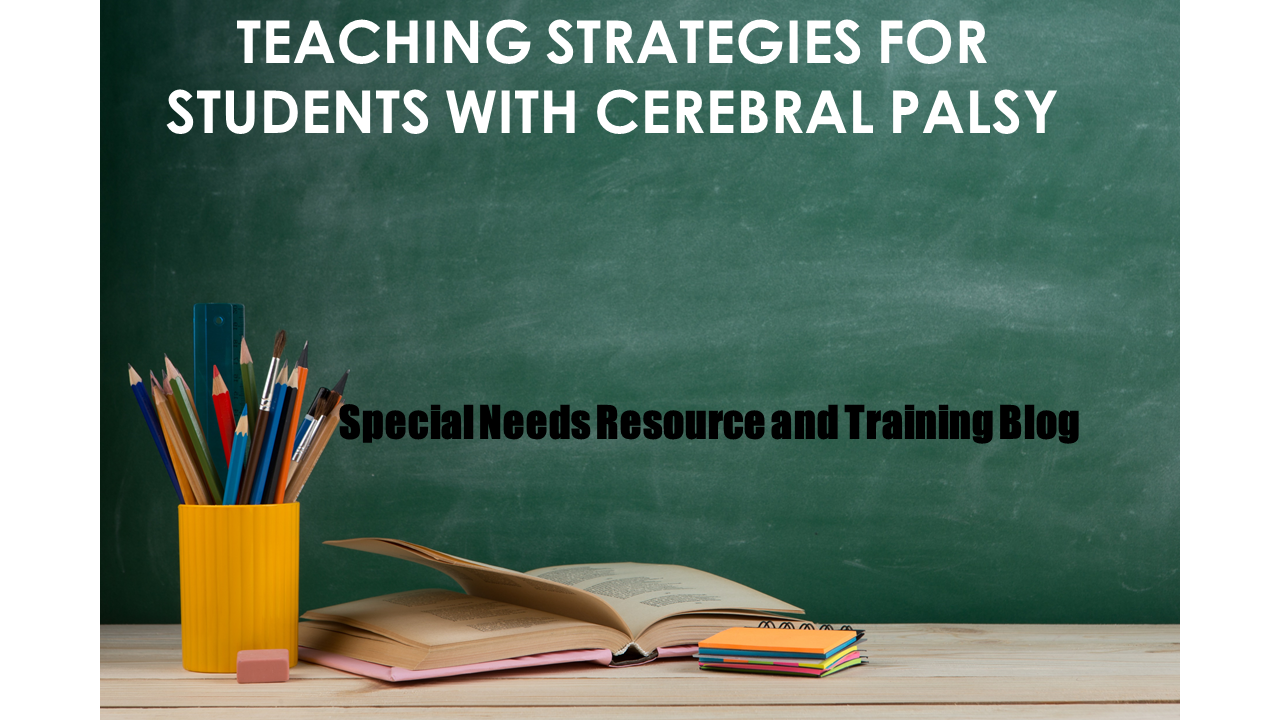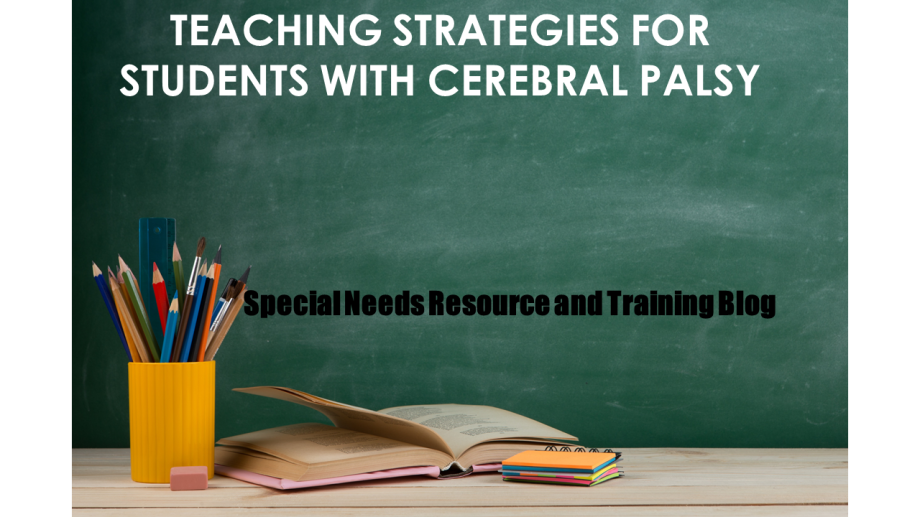Teaching Strategies for Students with Cerebral Palsy
Cerebral palsy is a motor disorder which results from damage to the brain occurring before, during and after birth. Cerebral palsy is the most common motor disability in childhood and it is estimated that 1 in 323 individuals have been identified with cerebral palsy.
Since cerebral palsy is the result of damage to the brain, it impacts each person differently ranging from severe to mild symptoms. It is estimated that many children with cerebral palsy also have at least one co-occurring condition. For instance, 41% had co-occurring epilepsy and 40% of children were diagnosed with an intellectual disability.
Teaching strategies should focus on assistive technology, fine and gross motor skills, and personal care. Accommodations and modifications should include providing extra time for task completion.
The following links provide information on teaching strategies.
Accommodating a student with cerebral palsy
Cerebral palsy in the classroom
How to make your classroom inclusive for students with cerebral palsy
How to teach children with cerebral palsy
Inclusive teaching strategies for students with cerebral palsy
Students with mild cerebral palsy in the classroom: Information and guidelines for teachers
What teachers should know about children with cerebral palsy


